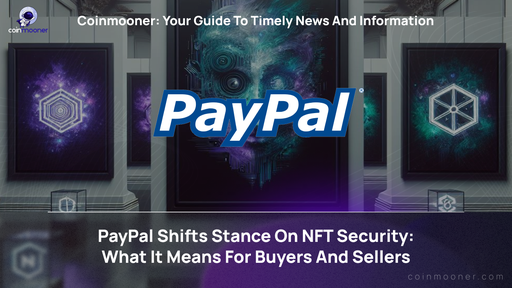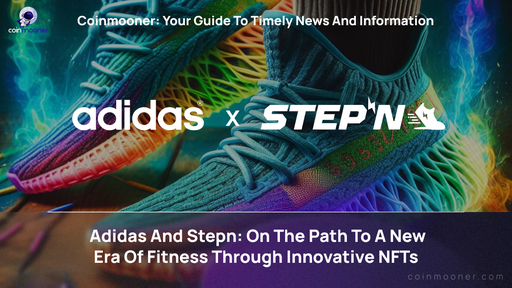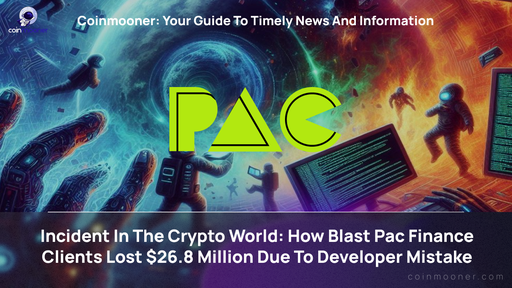How to Build a DApp in 2022


To create a dApp, it is required to have specific knowledge of the tech stack you will use in your work. Generally, this process is divided into several stages. Some help from other specialists may be required if you are planning on a large application. In this tutorial, you will find comprehensive information on how to build a dApp, which tools to use, and plenty of other useful explanations related to this topic.
Building a Dapp: Introduction
Before learning how to create a dApp, you should gain sufficient knowledge of the related notions. This will give you the essential basis for further learning. Read the information below to familiarize yourself with terms such as blockchain, smart contracts, dApps, and more.
What Is Blockchain and Smart Contract?
Those are two different notions that are deeply related to each other. A blockchain means a digital network. It is built and maintained by multiple computers running certain pieces of software. The blockchain consists of a distributed ledger tracking transactions. Once in the system, the information of such transactions is impossible to alter. Blockchains are fully decentralized, which means that there is no single authority controlling them.
A smart contract is a software program that adds layers of data on top of a digital transaction executed on a blockchain. Thanks to such digital agreements, it is possible to conduct more complex transactions than exchanging tokens. In simple words, it allows executing contracts between parties based on preset conditions.
What Is DApp?
This term means a decentralized application. It is very similar to a regular mobile application in how it works. The core difference is that a regular app communicates with servers, while a dApp is based on a blockchain. So, users interact with the blockchain when using such an application.
So, returning to the main question of how to build a dApp, it is important to emphasize that the tech stack used for creating it is different from the tools and languages involved in the development of centralized applications.
How It Works
DApps are based on smart contracts, which come in the form of backend code. This code runs on a decentralized network. If there is a failure at one point, this will not cause a failure in the entire application. A smart contract is created to set rules for certain transactions. Once dApps appear on the Ethereum network, no one can change them.
The way dApps work also depends on the blockchain it is based on. For example, if you create a dApp on Ethereum, users can run it in a web browser after installing a proper browser extension.
Where to Start
Before we dig deeper into the “How to Build a dApp” question, we will need to determine what is needed for the preparation stage. Some research and thinking are required for a start. Here are the explanations of what you need:
Deciding On What Technology to Use
It is essential to determine the technology you are going to use for different development areas, including the following:
The choice of tools includes Truffle, Solidity, Remix, and others.
Team
It is possible to create dApps on your own, which depends on their complexity and your knowledge of the required tech stack. If you do not possess the necessary knowledge, it is better to hire a professional developer. However, you may also need to hire a team of specialists for large projects. They will know how to build a dApp based on its specifics.
ICO
It stands for Initial Coin Offering and explains how funds are raised for a new crypto project. ICOs allow project owners to get enough funds to implement their ideas. This procedure is associated with releasing a new crypto coin. If investors are interested in the project, they purchase the coins, and the funds are sent to a specified crypto wallet of the developer. Then, project owners can use the received money to create dApps.
How to Build a DApp: Step-By-Step Guide
Several steps are involved in creating a new decentralized application. Knowing them is important to keep the work well-organized and plan tasks properly. Here is the detailed guide on building a dApp:

Source: https://moralis.io/how-to-build-decentralized-apps-dapps-quickly-and-easily/
Step 1: Set Up the Tools & Framework
First of all, you need to install a development framework. Once that is done, you will need to set up all the necessary tools for the front-end development of your application. The development process should be based on the programming language each team member is well familiar with. Unfortunately, many projects ignore this rule, which results in multiple issues. For example, if you create an application based on Ethereum, you can use such languages as Solidity or Serpent. Also, you should consider using Truffle because it is a great development platform.

Source: https://www.theengineeringprojects.com/2021/06/dapps.html
Step 2: Code the Application
It is possible to use different programming languages for coding your application. However, Solidity is a good choice for beginners since it is the easiest language. It is a great option for coding smart contracts, which are a central part of building dApps. The easiest way to create dApps is by building smart contracts right on the Ethereum blockchain.

Source: https://codeburst.io/dapp-scratch-a-cli-for-building-dapps-and-tutorial-for-building-your-first-one-5cabdff3771e
Make sure that your UI will have all features necessary for users and they will be placed conveniently. You can find more detailed instructions on how to build a dApp of a certain type on relevant resources.
Step 3: Deploying and Testing
Before deploying the code of a smart contract to a blockchain, remember that it will be stored there forever, and nothing can be changed. The only thing you can do in this case is “overwrite” the old code with the new one.
You may wonder how to make a dApp of high quality? Testing is an essential procedure to go through for this purpose. You will need to build a test window for the development. Your team should have a clear idea of what should be checked during this procedure to ensure the proper functioning of the application. If you create dApps with bugs, it will be a headache. So, make sure your applications come with pure code and function properly.
Step 4: Launching the App
Once the application has undergone all the necessary testing stages, it is ready for launch. Choose a proper domain for the app, which is important for your marketing strategy. Even if you build dApps of exceptional quality, it also takes some effort to let people know about your project. So, this is when you should promote your application to draw the attention from other people.
Ancillary Ethereum Blockchain Development Tools and Resources
The question of how to build a dApp is tightly related to which tech stack to use. Various options are at your disposal, but using any of them requires sufficient knowledge. Thus, they are selected based on the specifics of the project and the skills of the developer.
Solidity
Solidity is the first choice for creating smart contracts for the Ethereum blockchain. It is similar to many other languages, such as C++, Python, and JavaScript. So, everyone familiar with these programming languages will find it easy to learn Solidity.
The EVM is the key component for executing code written in Solidity. It is a virtual computer-based on blockchain, which turns human ideas into code. Solidity also uses various programming components that other languages have. For instance, it features string manipulation, variables, functions, classes, and more.
Since Solidity has been around for just a few years, the number of learning sources is limited. Usually, when someone wants to study a new language, the person would buy a book on this topic. But while you can find plenty of books to learn Java, not many materials are available for Solidity. Therefore, it is recommended to start with the languages similar to it and then try to use the best from available sources on how to build a dApp using Solidity.
Remix
It is an Ethereum integrated development environment (IDE), allowing you to conduct various actions with Solidity code, such as writing, compiling, and debugging. It can be a highly handy tool in dApps development.
Usually, it is referred to as Remix IDE. This open-source application is available in both versions — web, and desktop. As a development environment, it comes with plenty of helpful plugins. Thanks to its intuitive design, specialists can quickly develop applications. This application is primarily used in the development of smart contracts. Additionally, it can be used for teaching users how to make dApps on the Ethereum network.
Ganache
It is a high-end development tool which is helpful throughout all stages of the development process. Ganache allows developing, deploying, and testing smart contracts in a safe environment. It is available in two versions, including a desktop application (Ganache UI) and a command-line tool (ganache-CLI). The former version is suitable for the development of both Ethereum and Corda, and the latter is utilized in the Ethereum development. Different versions of Ganache can be run on various platforms, such as Windows, Mac, and Linux.
Creating dApps can be difficult, so the use of beneficial platforms, such as Ganache, can simplify the task. It is possible to set up a local dev chain and test dApps for free and with great efficiency. Ganache is one of the components of the Truffle Suite ecosystem, which allows recreating blockchain environments to test smart contracts.
It is quite easy to use Ethereum Ganache. Once the GUI is launched, users can choose between a customized or quickstart workspace. During testing, the conditions of smart contracts can be checked on a separate page.
Web3.Js
Web3.js means a collection of libraries designed for interaction with an Ethereum node using IPC, HTTP, or WebSocket. To understand the significance of this tool, let’s learn some important basics, which will also be helpful in answering the question of how to create a dApp.
A decentralized application has three main components:
It is essential to provide proper interaction with smart contracts from the front end. Before the development of web3.js, the tool known as JSON-RPC API was used for this purpose. However, it did not provide entirely satisfactory results. Thanks to web3.js, it is possible to interact with an Ethereum node using only JavaScript.
Truffle Suite Framework
Those learning how to build dApps should essentially get the knowledge of the Truffle. It has several important functions. It can be used as a development environment and as a testing framework.
When Solidity writes code to create smart contracts, they need to be converted into machine-readable code. This task is conducted by an Ethereum compiler. The Truffle Suite can help with this task.
It consists of different tools, including:
Also, all the tools included in the Truffle Suite work perfectly with Moralis. The latter provides users with the backend infrastructure.
Ropsten
It is an Ethereum network used for testing purposes. You may want to use it if you are about to deploy your project on Mainnet, which is the main Ethereum network. Ropsten has been around since 2016. Initially, it was not very convenient to use due to its slow speed. However, now it is working much faster, so you can leverage it to build dApps.
The Ropsten test net allows developers to test their work in a live mode without using real ETH. It uses the same protocol as Ethereum does, yet it costs nothing to use Ropsten. Once bugs are detected, developers can correct them in a hassle-free manner. It is not the only test net available for developers. The alternative options include Rinkeby, Kovan, and Goerli.
MetaMask
It is a tool enabling users to interact with Web3. Currently, it is accessible as a browser extension and a mobile app to run on devices based on Android and iOS platforms. It is one of the most popular crypto wallets available for users today. It can be used simply for storing and trading cryptocurrencies.
MetaMask also serves as a gateway to the Ethereum ecosystem of dApps. At the moment, this tool is used by over 21 million users all over the world. It is a great solution for accessing various applications based on blockchain.
MetaMask allows executing a range of Ethereum operations, such as managing multiple accounts, identity management, signing transactions, and more. For example, if you create a simple user interface that uses Web3 to interact with a smart contract, MetaMask serves to handle transactions as if there were only one node.
Is Building a Dapp Can Help Your Business?
Building a dApp may be an effective method to provide your business with additional benefits. While most users still prefer to use traditional applications, the number of dApps fans keeps growing steadily.
Currently, traditional applications allow earning money in the following way:
The earning opportunities provided by dApps are greater, and they include:
Also, the popularity of a DApp depends on its type. For example, gaming applications based on blockchain provide highly attractive opportunities for users, such as exchanging in-game items.
So, before you even start learning how to build a dApp, you should determine the potential profitability of your application.
Pros & Cons
Knowing how to build a dApp is not everything for your success. You need to have a clear idea of the benefits and drawbacks of this intention. Look at the table for more information:

Conclusion
Now that you know how to build a dApp and lots of other helpful information related to this topic, you can decide whether you can handle this. If you do not have enough experience and need to implement a highly important project, hiring professional developers would be the right decision.
However, it is possible to start creating simple dApps just to gain enough experience. Those aiming to raise some money can use multiple ways through dApps. Also, dApps have a range of benefits over traditional applications, such as a low risk of failure, strict security, easy transactions, and others.
Business owners willing to achieve various benefits by launching such applications can find a team of developers who will create a proper design, choose essential tools, and calculate possible expenses. Developers can also benefit from gaining knowledge of dApp languages, frameworks, and helpful tools.
This guide explains many aspects of dApps development; however, it does not cover everything. Refer to relevant alternative sources to learn required languages and additional info on coding, deployment, and other necessary stages.
Frequently Asked Questions
Where to Start Creating a Dapp?
If you need to create dApps, the best way to start this process is by using the Ethereum blockchain. You will also need to gain the necessary knowledge that you lack.
How to Build a Dapp?
Building a dApp requires a certain technical stack, which depends on the specifics of your project. The main stages involved include setting up tools and frameworks, coding, deployment, testing, and launching.
Is Building a Dapp Can Help Your Business?
There are multiple earning opportunities provided for dApps owners. However, the results mainly depend on the idea behind the dApp and the quality of its development.











